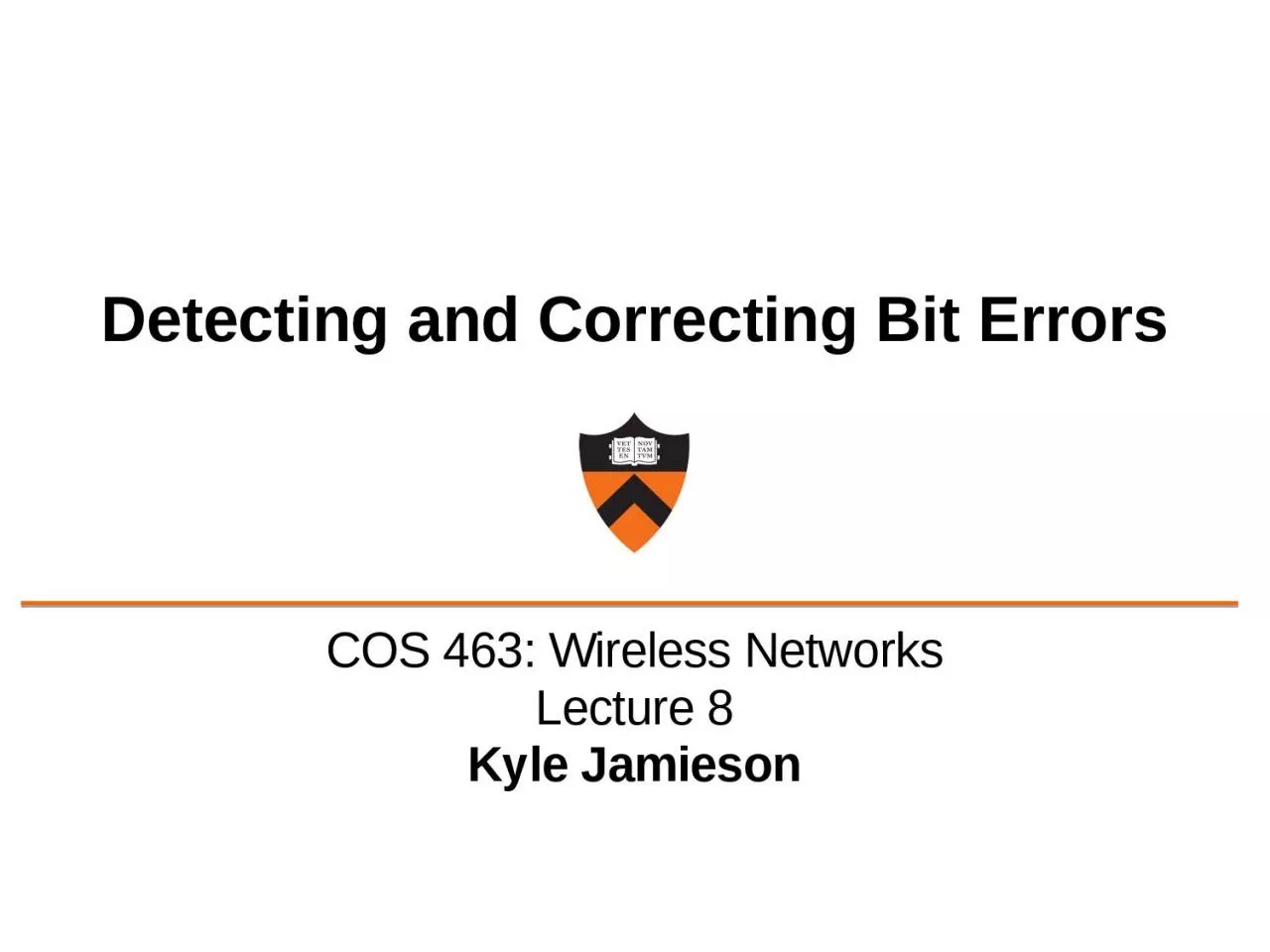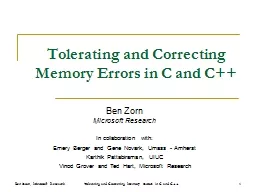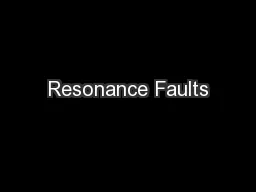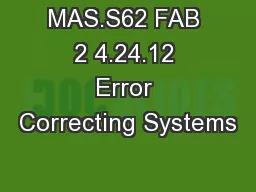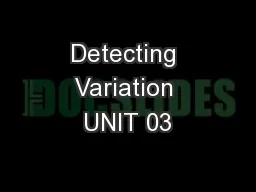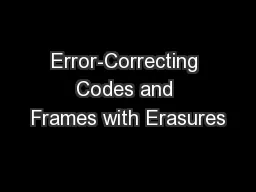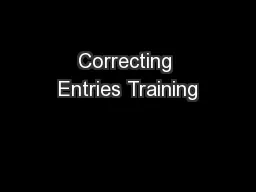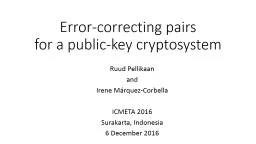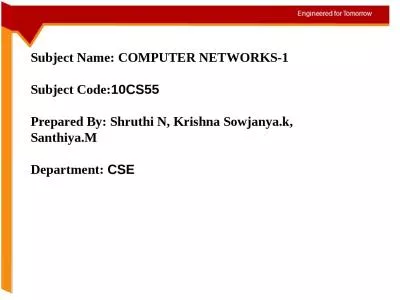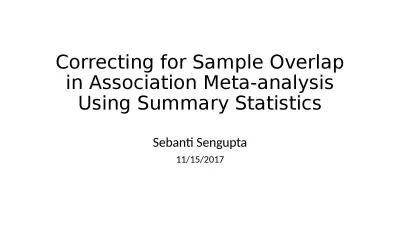PPT-Detecting and Correcting Bit Errors
Author : skylar | Published Date : 2023-11-11
COS 463 Wireless Networks Lecture 8 Kyle Jamieson Bit errors on links Links in a network go through hostile environments Both wired and wireless Consequently
Presentation Embed Code
Download Presentation
Download Presentation The PPT/PDF document "Detecting and Correcting Bit Errors" is the property of its rightful owner. Permission is granted to download and print the materials on this website for personal, non-commercial use only, and to display it on your personal computer provided you do not modify the materials and that you retain all copyright notices contained in the materials. By downloading content from our website, you accept the terms of this agreement.
Detecting and Correcting Bit Errors: Transcript
COS 463 Wireless Networks Lecture 8 Kyle Jamieson Bit errors on links Links in a network go through hostile environments Both wired and wireless Consequently errors will occur on links. The 64 bit version of Windows handles large amounts of random access memory RAM more effectively than a 32 bit system How can I tell if my computer is running a 32 bit or a 64 bit version of Windows To find out if your computer is running a 32 bit o Ben Zorn. Microsoft Research. In collaboration . with:. Emery Berger and Gene Novark, . Umass. - Amherst. Karthik Pattabiraman, UIUC. Vinod Grover and Ted . Hart, Microsoft . Research. Ben Zorn, Microsoft Research. Dr. . Chuck . Neufeld. Lander University. Resonance Faults. Faults Related to Nasal Resonance. Faults Related to Tone Color. Nasal Resonance Faults. Excessive Nasality. Insufficient Nasal Resonance. Nasal Resonance Faults. James 1:13-18. “Let no one say when he is tempted, “I am tempted by God”; for God cannot be tempted by evil, . nor . does He Himself tempt anyone. . But . each one is tempted when he is drawn away by his own . http://lslwww.epfl.ch/pages/embryonics/thesis/Chapter3.html. n. MAJ. p. p. p. MAJ. MAJ. p. p. p. MAJ. p. p. p. k. Itanium Quad Tukwila. Transistor Count: 2B. Cost: ~$100. Si Wafer with Area sufficient for. Oh My!. With the group around you review how Norman defines these three terms and how they interrelate.. Slips and Mistakes are both types of errors. A person has an intention to take a particular action.. Detecting Variation. In populations or when comparing closely related species, one major objective is to identify variation among the samples. AKA, one of the main goals in genomics is to identify what genomic features make individuals/populations/species different. Amanda S., Amy, . Izzie. , Katie. SPWM July 30. th. , 2011. What it is. An error-correcting code is an algorithm for expressing a sequence of numbers . Any errors which are introduced can be detected and corrected (within certain limitations) based on the remaining numbers. October 2018. Purpose. The purpose of this training session is to review the new Correcting Entry Process and answer questions that have come up so that you can continue to request transaction, journal, and payroll corrections.. Ruud. . Pellikaan. and. Irene Márquez-Corbella. ICMETA 2016. Surakarta. , Indonesia. 6 . December. 2016. Content. 1. . Introduction on Coding, Crypto and Security. 2. . Public-key crypto systems. 3. . The purpose of channel coding. . is-. either to protect information from channel noise, distortion and . jamming, . which is the subject of error detecting and correcting codes.. . Or,. to protect information from the . Roi Shillo, Nick Hoernle, Kobi Gal. Creativity is…. Ubiquitous. [Schank & Cleary 95]. Fundamental . [Boden, 98]. Machine recognisable . [Newell, Shaw & Simon 62]. Focus for EDM. Open Ended Environments. NETWORKS-1 . Subject Code:. 10CS55. . Prepared By. : . Shruthi. N, Krishna . Sowjanya.k. , . S. anthiya.M. . Department: . CSE. . . 2. Data . Link . Layer-1:Error Detection and correction. Sebanti Sengupta. 11/15/2017. Background. Meta-analysis an important strategy for genetic association studies. Increases sample size and power. Can lead to discovery of novel loci. Can use previously published study results.
Download Document
Here is the link to download the presentation.
"Detecting and Correcting Bit Errors"The content belongs to its owner. You may download and print it for personal use, without modification, and keep all copyright notices. By downloading, you agree to these terms.
Related Documents

